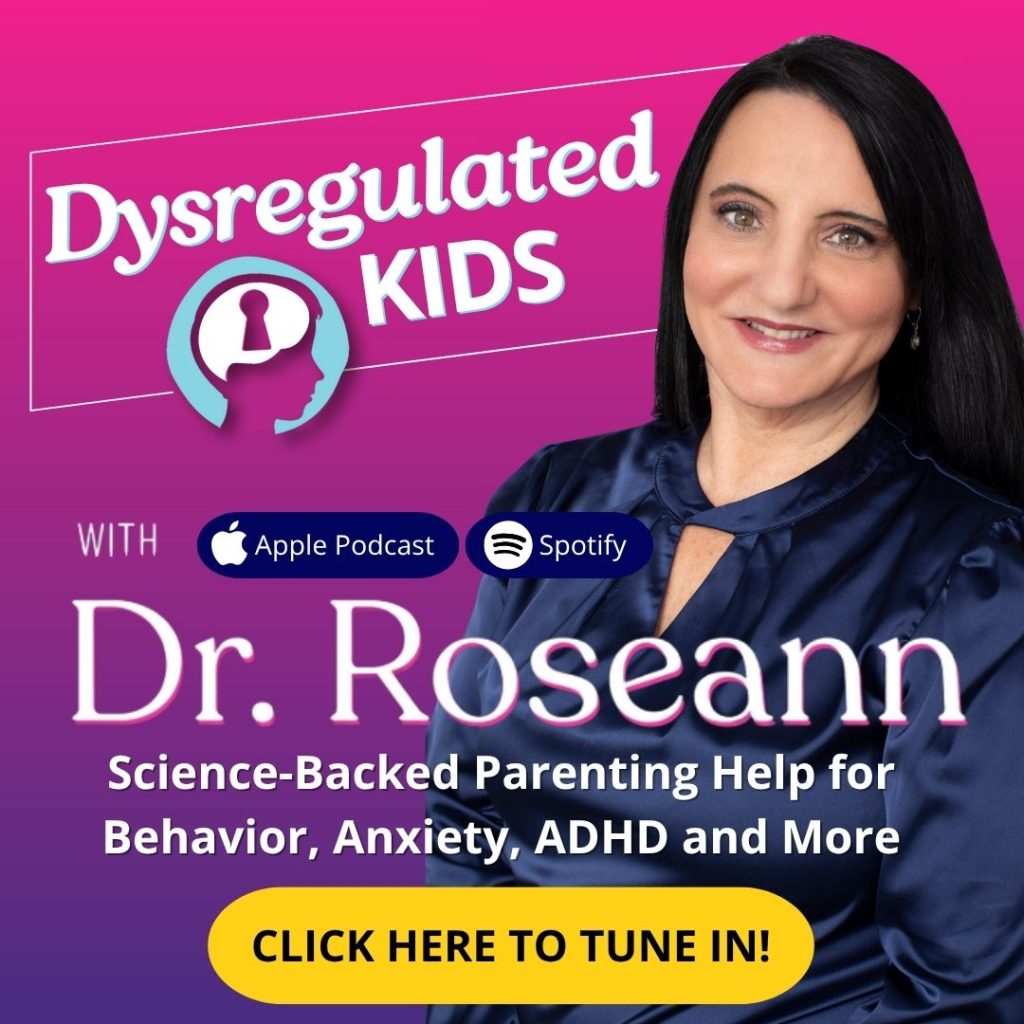Estimated reading time: 8 minutes
If your teen’s behavior feels unpredictable and overwhelming, you aren’t failing as a parent. Many times, those outbursts or struggles are really signs of a brain that isn’t yet calm or regulated.
ADHD in teenagers often looks very different from ADHD in younger children. This is why so many parents feel blindsided during the teen years.
What may seem like laziness, moodiness, or defiance is usually a sign of a struggling nervous system. This leads to restlessness, emotional outbursts, disorganization, and risky decision-making.
In this guide, you’ll learn the most common signs and symptoms of ADHD in teens. I’ll explain how diagnosis works and why untreated ADHD can create serious challenges. Most importantly, you’ll discover proven strategies that calm the brain first so your teen can learn, connect, and thrive.
What ADHD Looks Like In a Teenager
ADHD shifts with age. Hyperactivity may look less like “bouncing off walls” and more like restlessness, fast talking, and mental busyness. Inattentiveness shows up as late work, disorganization, and inconsistent follow-through.
Common Day-To-Day Patterns
- Inattentive features: losing items, missing instructions, “blanking” during lectures, time blindness. And task switching without finishing.
- Hyperactive-impulsive features: fidgeting, rapid speech, and interrupting. There are also blurting, trouble waiting, and risk-taking (e.g., speeding, impulsive posts).
- Executive function gaps: planning, prioritizing, working memory, and initiation are heavy lifts for many teens with ADHD. Teens with ADHD often have trouble with self-control and memory (Willcutt et al., 2005).
Parent story:
I had this patient once, let’s call him Jeff. Jeff did great in high school—bright, witty, teachers loved him. College hit, and he unraveled. When we looked back at his preschool notes, impulsivity was there. He simply out-smarted the system until workload and independence spiked.
Takeaway: Once executive function demands jump, hidden ADHD can finally get in the way.
How To Tell ADHD From “Normal Teen Behavior” or Anxiety
Teens are moody, yes. ADHD brings persistent patterns across settings (home/school/activities) that impair functioning. Anxiety can cause focus problems, too. But usually, it’s due to worry loops, not executive skill gaps.
Quick Distinctions
- ADHD: life-long patterns (often before age 12). It includes inconsistent performance, benefits from structure and movement, and forgetfulness even when calm.
- Anxiety: focus improves when worry decreases. Avoidance is driven by fear; perfectionism and somatic symptoms are common.
- Both can co-occur. When in doubt, evaluate both—behavior is communication, and we follow the data.
Parent story:
There also was Maya, 15. She was labeled “unmotivated.” In sessions, we tracked panic spikes before math. With breathing and stepwise exposure, her focus improved, but she still lost materials. Layering organizational supports finally moved the needle.
Takeaway: Treat anxiety and executive skills if both are present.

How ADHD is Diagnosed in Teens
A comprehensive evaluation examines developmental history. It includes school records, behavioral ratings, and the results of a clinical interview. Teens often minimize symptoms; parent/teacher input matters.
Key Notes
- DSM-5-TR criteria need symptom thresholds by age: for ages 17 and older, the threshold is five symptoms (vs. six for younger youth). Symptoms must be present for at least six months across settings and cause impairment.
- Assess comorbidities: learning differences, anxiety, depression, OCD. It also includes sleep issues and mood disorders, which can mimic or magnify ADHD.
- Expect discussion of executive function and emotional dysregulation. Areas commonly affected in adolescents with ADHD (Willcutt et al., 2005).
Parent story:
Carlos (17) swore he “tried.” Data showed strong verbal reasoning but weak working memory and task initiation. Once we reframed this as a brain-based executive skill gap, his shame dropped, and engagement rose.
Takeaway: It’s not bad parenting—it’s a dysregulated brain. Let’s calm it first.

Risks Teens With ADHD Face
Unmanaged ADHD increases real-world risks. These include driving crashes, academic underachievement, and substance use. An extensive cohort study found that newly licensed drivers with ADHD had a 36% higher crash hazard versus peers (Curry et al., 2017).
Lower the risk with:
- Driving plan: graduated privileges and no phones. Also consider passenger limits, a calm-breathing routine before driving, and parent-teen contracts.
- Sleep first: consistent wind-down and wake time; poor sleep worsens inattention and mood.
- Digital boundaries: device parking stations. Support dopamine-healthy habits (movement, sunlight, novelty through safe challenges).
“Crash risk is heightened for young drivers with ADHD.” —Curry et al., 2017
What Really Helps At Home Right Now
We start with Regulate → Connect → Correct™. It’s because learning and behavior change only stick when the brain is calm.
Home Strategies
- Co-regulation first: your calm equals their calm. Short breathing together, rhythmic movement, or sensory input before problem-solving.
- Externalize executive skills: visual schedules, checklists, timed work sprints + body breaks, one-minute “reset to regulate.”
- Micro-goals: shrink tasks (e.g., “Open Google Classroom” → “Find Assignment” → “Start #1”). Celebrate process, not just outcome.
- Natural consequences + consistency: clear rules, predictable follow-through—not lectures.
School Supports That Work for ADHD
A Section 504 Plan or IEP can target executive function and attention challenges.
High-Impact Accommodations
- Organization & planning: chunked deadlines, duplicate sets of materials, teacher-posted examples.
- Working memory supports: written directions, note scaffolds, and recorded lectures.
- Attention & regulation: movement breaks, seating, reduced distractions, alternative testing locations/time.
- Grading for growth: credit for process (drafts, check-ins), late-work grace with a plan.
Pro tip: Pair accommodations with skills instruction, such as executive function coaching or study strategies. This approach supports building independence rather than fostering learned helplessness.
Safe and Effective Treatment Options
The right plan is multi-modal and individualized.
Evidence-Based Pillars
- Education + parent-teen coaching to build routines and communication.
- Behavioral/CBT approaches for task initiation, time management, and anxiety.
- School supports (504/IEP) aligned to EF goals.
- Medication may help alleviate some of a teen’s core symptoms. Decisions should weigh the benefits/side effects with the guidance of a qualified prescriber.
- Lifestyle for regulation: sleep, protein-forward nutrition, regular movement, and sensory-calming
Why Focus on EF + Regulation?
Meta-analytic research shows that ADHD is linked to consistent but variable executive function weaknesses. The biggest challenges are in response inhibition and working memory, so we target those skills directly. (Willcutt et al., 2005)
“ADHD often persists into adolescence and adulthood; how we define persistence affects the numbers, but support remains essential.” —Sibley et al., 2016
“Driving guidance is part of ADHD care for teens.” —Curry et al., 2017
When To Consider Professional Evaluation
- Red flags: Chronic late/missing work and emotional outbursts after school. These can also include big gaps between potential and performance. Or these can be risky, impulsive decisions (such as driving, online activities, or substance use).
- Timing tip: Evaluate before major transitions (such as the new school year, college applications, or driving). This way, supports are ready.
- Reality check: ADHD frequently continues into adulthood. Studies showed substantial symptom persistence depending on how you measure it (Sibley et al., 2016).
Ready to Help Your Teen Thrive? Here’s Your Next Step
You’re not alone. When we calm the brain first, everything else—behavior, learning, and relationships—can begin to shift. With the right mix of regulation, structure, and compassion, teens with ADHD can thrive today and for years to come.
Want a clear, step-by-step home plan? Grab The Natural ADHD Focus Formula Kit, a science-backed roadmap to helping your child focus, self-regulate, and succeed, without medication.
FAQs About ADHD in Teenagers
How common is ADHD in teens?
Prevalence varies by method and source. It’s one of the most common neurodevelopmental conditions and often continues into adolescence and adulthood (Sibley et al., 2016).
Can ADHD look like laziness?
No. What you’re seeing are executive skill gaps and a dysregulated nervous system. When we calm the brain and teach skills, effort becomes visible.
Do girls present differently?
Often more inattentive and internally anxious, which means they’re missed until demands spike.
What if my teen refuses help?
Start with co-regulation and small, collaborative steps. Choice and voice matter in adolescence.
Citations
Curry, A. E., Metzger, K. B., Pfeiffer, M. R., Elliott, M. R., Winston, F. K., & Power, T. J. (2017). Motor vehicle crash risk among adolescents and young adults with attention-deficit/hyperactivity disorder. JAMA Pediatrics, 171(8), 756–763. https://doi.org/10.1001/jamapediatrics.2017.0910
Sibley, M. H., Swanson, J. M., Arnold, L. E., Hechtman, L. T., Owens, E. B., Stehli, A., Abikoff, H., Hinshaw, S. P., Molina, B. S. G., Mitchell, J. T., Jensen, P. S., Howard, A. L., Lakes, K. D., & Pelham, W. E. (2016). Defining ADHD symptom persistence in adulthood: Optimizing sensitivity and specificity. Journal of Child Psychology and Psychiatry, 57(6), 655–662. https://europepmc.org/article/pmc/5809153
Willcutt, E. G., Doyle, A. E., Nigg, J. T., Faraone, S. V., & Pennington, B. F. (2005). Validity of the executive function theory of attention-deficit/hyperactivity disorder: A meta-analytic review. Biological Psychiatry, 57(11), 1336–1346. https://doi.org/10.1016/j.biopsych.2005.02.006
Always remember… “Calm Brain, Happy Family™”
Disclaimer: This article is not intended to give health advice, and it is recommended to consult with a physician before beginning any new wellness regimen. The effectiveness of diagnosis and treatment varies by patient and condition. Dr. Roseann Capanna-Hodge, LLC, does not guarantee specific results.
Are you looking for SOLUTIONS for your struggling child or teen?
Dr. Roseann and her team are all about science-backed solutions, so you are in the right place!
©Roseann Capanna-Hodge












